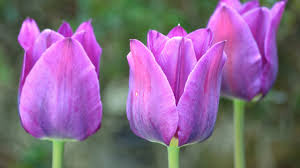
—
**Introduction: Crowning Achievements Through Centuries**
The humble hat, a sartorial staple that has adorned heads across cultures and eras, possesses a rich history that transcends mere fashion. This exploration delves into the fascinating journey of hats, from their ancient origins to their evolution as symbols of style, status, and self-expression throughout history.
**1. **Earliest Elegance: Ancient Hats as Symbols of Rank**
*The history of hats dates back to ancient civilizations where head coverings served as markers of status and rank. From the regal crowns of Egyptian pharaohs to the ornate headpieces of Roman elites, early hats were more than just fashion; they were symbols of authority and prestige.*
**2. **Medieval Millinery: Fashion and Function Unite**
*In medieval Europe, hats evolved to serve both functional and fashionable purposes. Tall, pointed hats became iconic, with variations signaling different professions or social standings. The chaperon, a hooded hat with a trailing tail, exemplified the fusion of style and practicality.*
**3. **Renaissance Elegance: Feathers, Lace, and Extravagance**
*The Renaissance ushered in an era of opulence, reflected in extravagant headwear. Feathered hats, adorned with lace and jewels, became synonymous with high society. Elaborate creations like the farthingale hat showcased the craftsmanship and artistic flair of milliners.*
**4. **Age of Exploration: Hats Across Continents**
*As explorers set sail to discover new lands, hats became a cross-cultural phenomenon. Tricorn hats in Europe, conical hats in Asia, and wide-brimmed sombreros in the Americas showcased the diversity of headwear influenced by geography, climate, and cultural traditions.*
**5. **Victorian Virtuosity: Hats as Statements of Femininity**
*The Victorian era marked a zenith of hat fashion, especially for women. Lavish bonnets, adorned with ribbons, flowers, and feathers, became essential accessories. The sheer variety of Victorian hats reflected the complexities of femininity and societal expectations of the time.*
**6. **Roaring Twenties: The Jazz Age and Cloche Hats**
*The Jazz Age of the 1920s brought about a revolution in fashion, epitomized by the iconic cloche hat. This snug, bell-shaped hat symbolized the spirit of liberation and modernity, complementing the bold flapper style of the era.*
**7. **World War Influence: Functional Fashion and the Fedora**
*World War II saw the rise of hats with practical purposes. The Fedora, initially a men’s hat, became popular for its versatility and understated elegance. It reflected a shift toward functional yet stylish headwear during challenging times.*
**8. **Contemporary Chic: Hats in the 21st Century**
*In the 21st century, hats continue to be more than mere accessories; they are statements of personal style. From classic fedoras to trendy beanies, contemporary fashion embraces a diverse range of headwear. Hats now serve as expressions of identity, creativity, and individuality.*
**Conclusion: A Hat-Tip to Timeless Tradition**
The history of hats is a captivating journey through the epochs, reflecting the ever-changing tapestry of human civilization. From symbols of power and prestige to expressions of personal style, hats have adorned heads with grace, significance, and flair. As we tip our hats to the past, let us also celebrate the enduring legacy of this crowning glory that continues to shape our fashion narratives and transcend the sands of time.









